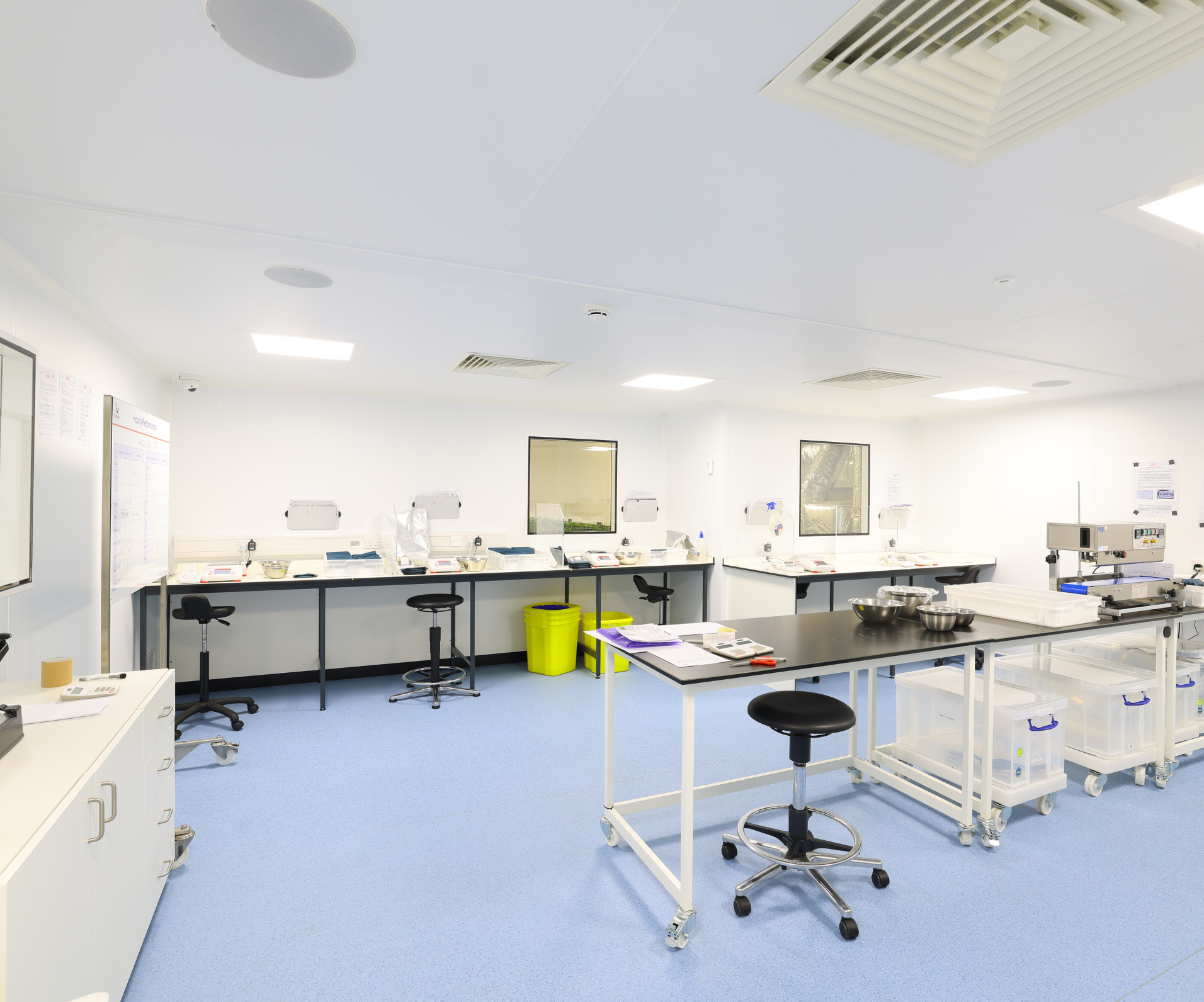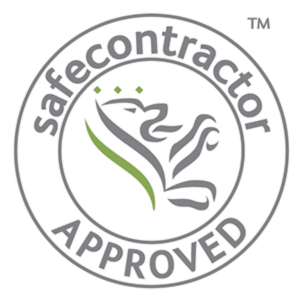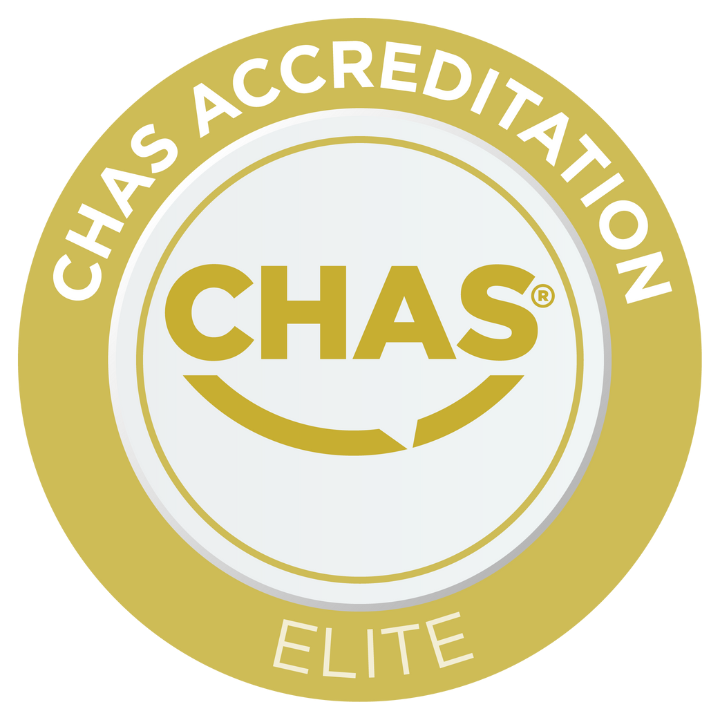The Essential Role of Cleanrooms in the Medicinal Cannabis Industry
The medicinal cannabis industry is a bustling and growing market in the UK, with industry analysts at Prohibition Partners estimating that the market could grow up to $570 million by 2028. With consistent market growth over the past few years, an essential aspect of ensuring a safe and consistent production of cannabinoid-based products is the use of cleanrooms and controlled environments throughout multiple stages of the production process.
In this blog, we’ll explore why cleanrooms are necessary in this industry, how they are used to facilitate the production of medicinal cannabis, the benefits of doing so, and why Connect 2 Cleanrooms is the perfect partner for your next project.

The medicinal cannabis industry: an overview
The use of medicinal cannabis became legal in the UK on 1st November 2018, with doctors being granted the option of legally issuing prescriptions to patients who might benefit from this type of treatment. Unlike cannabinoid supplements (including CBD oils, edibles, and raw plant extract), medicinal cannabis products typically have higher levels of Tetrahydrocannabinol (THC) and specifically require a prescription. Any product classified as ‘medicinal’ must adhere to stringent regulatory guidelines and be manufactured in a GMP grade environment. Whereas CBD-based supplements are not deemed a medicinal product and are governed by the FSA, meaning they are not required to meet the same regulatory standards and may be suitable for manufacture in an ISO environment.
Learn more about the cleanroom requirements for CBD supplement production, here.
One of the main challenges to this industry as a whole is maintaining safe and consistent quality across different batches of product, especially when so many environmental factors can influence the yield, quality and strength of the plants themselves. Couple this with the need to produce and package the end product in an environment that is free from contamination to create a product that is safe for human consumption – this is where cleanrooms come in.
Why are cleanrooms necessary?
With the ability to maintain strict environmental parameters such as temperature, humidity, airflow and particulate counts, cleanrooms and controlled environments are an ideal solution to maintaining consistent growing and production conditions. Manufacturers might require a facility with multiple rooms operating with diverse environmental controls to facilitate the production of cannabis at different stages of the manufacturing process.
For example, a growing room might require different environmental controls to a flowering room which in turn might require different parameters to a drying room and packaging room. The ability to control the environment for each of these key areas with extreme precision, allows risks involved with cultivating cannabis and their derived products to be minimised and regulated with accuracy.
The role of cleanrooms in different stages of production
The production process for manufacturers might vary from one to another. Some might be involved with the growing and production of the plant, right the way through to the end product, while others might be involved purely with one specific area. However, the various stages of medicinal cannabis production can be broadly broken down into the following stages.
1. Seeding and growing
During the initial stages of cultivation, cleanrooms play a pivotal role in maintaining temperature, humidity and particulate control. This ensures the healthy development of plants and prevents mould, pests and microbial contamination during the early stages of the production process. The minimises the risk of quality variance in the end product and standardises the operational process for repeated consequences.
2. Flowering
The flowering stage requires careful control of environmental variables as the plants begin to mature and produce a product worth yielding. Cannabis plants at this stage require different exposure to light in comparison to their growing stage, while maintaining regulated airflow to prevent the buildup of mould or mildew forming on the buds. Maintaining these parameters at the same consistent level will allow a dependable yield for each production run, resulting in a reliable and repeatable end product.
3. Drying and curing
Once the plants have reached full maturity and are ready to harvest, they need to be dried and cured before they can be processed into the final product. There are multiple risks to the product at this stage, such as airborne particles and microbial contaminants that could compromise the potency, flavour and effectiveness of the overall yield. An environment with a higher air change rate might be useful to minimise the risk of microbial contamination, as well as consistent temperature and humidity control, enabling moisture levels to be carefully monitored.
4. Processing into medicinal cannabis products
There are a multitude of products available on the market today. Whatever the end product may be, it’s vital that it’s not cross-contaminated during the extraction, infusion or packaging process. A controlled environment at this stage of the process may be less reliant on temperature and humidity control and more dependent on particle counts and environmental cleanliness, however, the optimal environment for each product may vary.
It’s important to note that a GMP cleanroom is only mandatory during the drying, curing and processing of medicinal cannabis products stages (3 and 4). The seeding, growing and flowering stages (1 and 2) can be produced in a non-GMP environment; however, they must adhere to the Good Agricultural and Collection Practice (GACP) guidelines.
Connect 2 Cleanrooms and medicinal cannabis facilities
We have produced cleanrooms and controlled environments for the medicinal cannabis industry for a number of years, many of which we can’t publicise due to customer discretion and the sensitive nature of the industry. However, one of the main reasons customers choose to work with us is that we have a comprehensive, in-house team of experts that can facilitate different parts of the projects as we move forward. We have a regulatory governance specialist who can navigate the legislation involved with constructing a GMP facility, as required for medicinal cannabis production.
Our design and build specialists create a functional design that suits your specialist needs, while our furniture and consumables team can create an ergonomic workspace that facilitates process flow. Finally, our validation and qualification team ensure the environment is controlled and classified during the initial build through continued use of the cleanroom, confirming industry and regulatory compliance.
With industry leaders partnering with us to assist in the production of their cannabis derived products, Connect 2 Cleanrooms continues to play a pivotal role in the construction of controlled environments for the medicinal cannabis industry.




